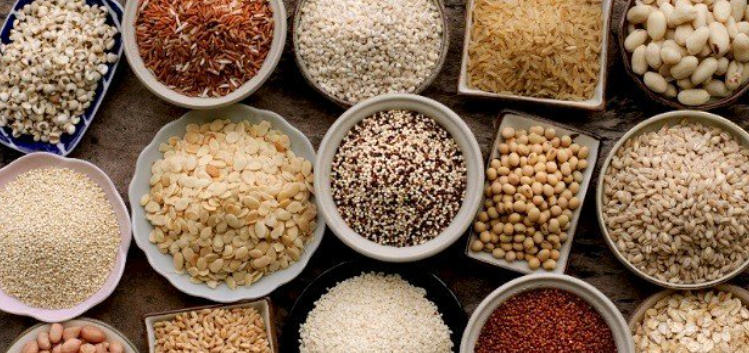A whole grain or a food made from it contains all the parts and nutrients found in the seeds of this grain in their original proportions.
In other words, even when whole grains are milled, crushed, or cooked, they still provide the same nutritional value.

Whole grains retain their three main parts in the same ratio as when they were planted in the field, and these parts are:
bran
The bran is the outer shell surrounding the kernel, which is edible and contains fiber, antioxidants, and B vitamins.
Seed
The seed is the part of the plant that can germinate if it is replanted. It contains minerals, healthy fats, group B vitamins, and a number of proteins.
Additionally, it pushes the buds upward so they can receive sunlight to produce photosynthetic energy, and the endosperm contains starchy carbohydrates, proteins, and some vitamins.
Examples of whole grains
- atmosphere
- wheat
- black wheat
- Bulgur
- corn
- Fonio
- freak
- Camot
- quinoa
- Oat
- Rice
- rye
- corn on the cob
Health benefits of whole grains
In contrast to refined grains, which lose most of their nutrients during refining, whole grains have many health benefits. Whole grains provide the following health benefits:
Protection of the cardiovascular system
Whole grains lower cholesterol, total fat, triglycerides, and insulin levels, all of which are beneficial to cardiovascular health.
During a 10-year period, Harvard Medical School researchers found that women who ate two to three servings of whole grains a day were 30 percent less likely to have a heart attack or die from heart disease than those who only ate whole grains.
According to a meta-analysis of seven large studies, people who consume two and a half servings or more of whole grains a day are 21 percent less likely to develop cardiovascular disease, such as stroke, heart attack, and coronary artery disease. Their stomachs are full. Study conducted in 2008 at Wake Forest University of Health Sciences in North Carolina found that less than two servings of whole grains per week were recommended.
Keeping diabetes at bay
Whole grains contain fiber, nutrients, and phytochemicals that can help reduce the risk of type 2 diabetes.
In addition to improving insulin sensitivity and glucose metabolism, whole grains also reduce food absorption, preventing blood sugar spikes. As a result, refined grains have a higher glycemic index because they contain less fiber and nutrients.
Preventing cancer
Despite the fact that eating whole grains can help prevent colon cancer, a study conducted by the London College of Public Health in 2011 found that whole grains can have a protective effect against cancer.
Digestive health improvement
Dietary fiber in whole grains helps soften stools and prevent constipation, one of the most common digestive problems, and eating whole grains can help prevent diverticulosis by reducing pressure in the intestines. The task can be completed. In order to strengthen the digestive system, cereals are one of the best options.


